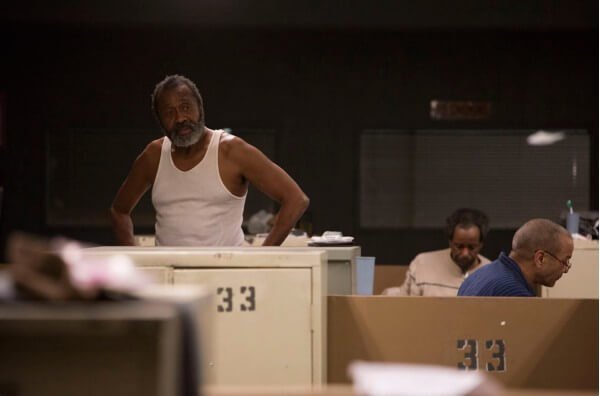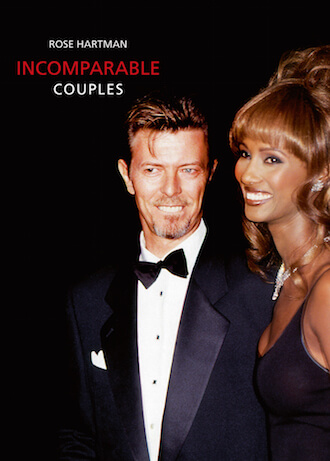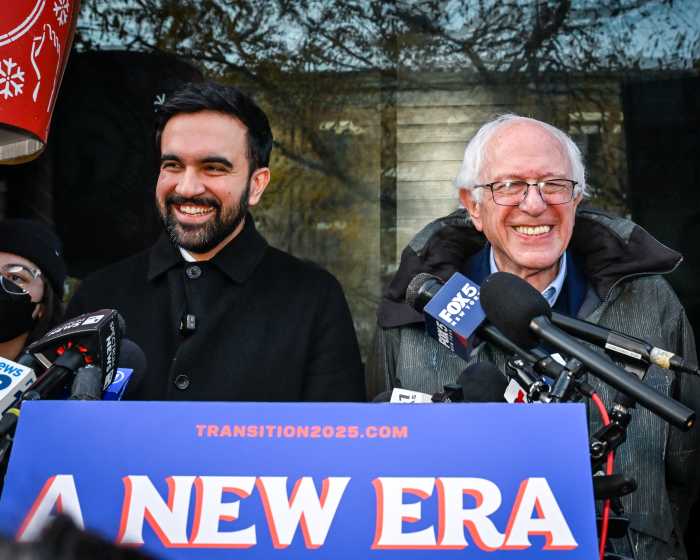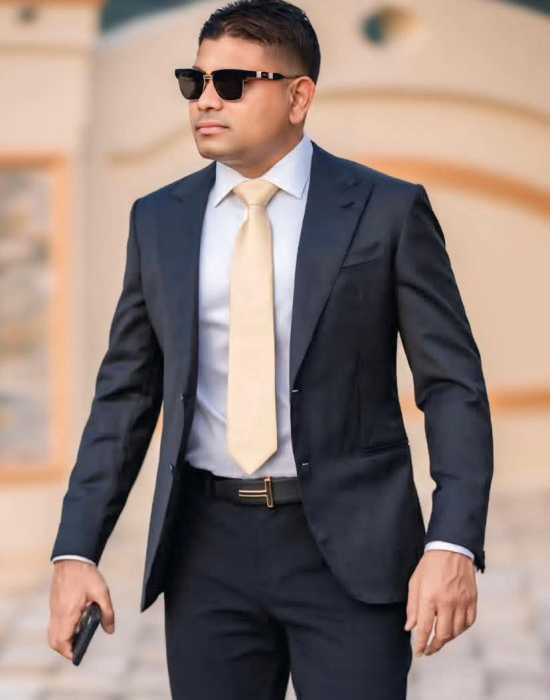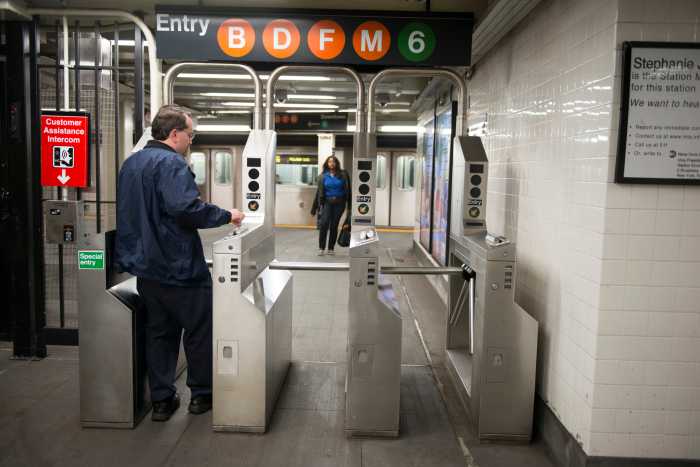Isaac Mizrahi sings at Café Carlyle through February 10. | COURTESY OF CAFÉ CARLYLE
Now at the Carlyle for a two-week residency is fashion designer turned cabaret artiste Isaac Mizrahi. Always a fan of his designs — how well I remember his little boutique in Bergdorf’s, the first thing you’d see off the escalator, decorated with his genius stylized sketches, works of art in themselves — I caught one of his earliest cabaret gigs about 15 years ago, and was deeply impressed. The patter was as urbane and witty as I’d expected — he’s one of the truly great raconteurs — but it was his sheer musicianship that really struck me. This man is a total performer, and I was eager to sit down with him in his West Village building, where he owns both an apartment and office space, to hear all about it.
“I’ve performed over the years at so many places that don’t exist any more,” he began. “The Ballroom, Eighty Eights. This is a new production: all new songs and patter and stories. What really makes it new, however, is the audience and what they bring every night. Always a new, interesting, and fun perspective, and they respond to different things. Although the music is pretty much set, a lot of the patter is based on what happens. I respond to what they respond to, and I can sense when something is not going well and then — abandon!”
Quick on his feet is key, which is no problem for Mizrahi, with his enormous personality, and it’s amazing how at ease he has always been in front of an audience, from the very beginning: “That spontaneity is what makes me the most scared about performing and yet that is the most exciting part. That fear converts into and becomes a kind of excitement.
Designer, QVC maven, master raconteur now reigns at the Carlyle
“I tell funny stories. You do this a few times and realize how challenging it can be, and after you do more and more, you wanna do it even more, and it becomes this crazy addictive thing.
“I can’t act and be anything but myself. I’ve done a lot of comedy shows where I usually play myself, or some version of that. Unless you’re at ease, the audience senses that and are gonna eat you alive. The one who is best at that is Liza. I worked with her for a while, and it doesn’t matter if it’s a room of 60 or Radio City Music Hall. She comes in off the street and the energy is there! It’s such a balance of ease and really being in charge of that great energy. I learned a lot from her.
“I went to the Rainbow once to see Lorna [Luft, Minnelli’s sister] and the show was so much more about Liza watching the show. People had one eye on Lorna and two eyes on her watching Lorna the whole time.”
Isaac Mizrahi with David Noh. | DAVID NOH
Like me, Mizrahi believes that picking songs people haven’t heard a zillion times before is important, for who needs to hear yet another rendition of “Hallelujah?”
“I have a design assistant who’s a real theater queen and sees everything. He’s a good judge of material. I did a little run-through of this show last week at West Bank Café for a small audience of like 60. I did my own version of ‘Anything Goes,’ with lyrics I wrote which went over well, and my band, some members of which have been with me from the beginning, seemed to love it. So I’m keeping that in, because more than anything I want to please them.
“I have a combo of piano, horn, bass, and percussion, which adds a certain luxe to the sound. I love a good trio — like Bobby Short, the master of this and the Carlyle. He had such ease and control over the club in the days when there were a lot more clubs to hear music, as opposed to now when there are so few. If you get booked now, you are really scrutinized, so I figured for this venue, you really want to up your game.
“I do a good song, ‘The Laziest Gal in Town.’ Cole Porter wrote it for Marlene Dietrich. I do a great song, ‘Dance Only with Me,’ by Comden and Green, a sad little ballad, a good song by Charles Aznavour called ‘There Is a Time.’ I think I do Blondie’s ‘Heart of Glass’ — we’ll decide on that one at the last minute.”
Laughing, Mizrahi continued, “Oh no, my show is anything but edgy. It’s the furthest thing from edgy. I just hope it’s a lot of fun. I express myself and speak my mind.”
Mizrahi has always done that. I remember that in his early show I caught, he mentioned a design being stolen from him and spat out the name “Michael Kors!”
“Oh yeah, exactly! Well, you see, things just come out! It’s funny — there are singers who come out with fashion collections that are really good. There are actors who branch out into design with licenses, too, but for a designer to sing is a whole other thing. I can’t think of any others who have done this, although there’s that great movie director — very tall, looks like an American Indian… right, Joel Schumacher. He was a fashion person, did windows at Kamali and Bendel’s.”
His being anything but the laziest gal in town, I told Mizrahi, “You must be so incredibly busy.”
“I appear on QVC twice a week and maintain that schedule all year long. I’ve also been writing this memoir for the past six years, literally devote every minute to that when I’m not developing these shows at the Carlyle. I am taking the show on tour now, to four or five different venues in other cities and it’s great fun, as I learn more and more about appearing in front of people.”
The QVC gig is indeed a hard mistress: “I’ve been doing fashion for so long, and I have such a great bunch of people working for me. The design part is not the hardest thing, maybe a few meetings a month and lots of emails. What’s really challenging is meeting this schedule because there’s a lot of airtime.
“I have two on-air hours on Monday at one and nine p.m., and usually Saturday morning, as well as other times during the week here and there. Once a month, we do special value and it’s literally 24 hours. You get there at midnight and you literally don’t stop until the following midnight — you have breaks in between but those are big, big days. You’re right, David, it is the Jerry Lewis Telethon of fashion!
“It’s a challenge, but you know, I love a challenge. It’s like one huge trunk show, which I loved doing, especially in my favorite cities like Chicago, Los Angeles. Millions of people would show up and buy lots of clothes, rather than those places where people would go, ‘Really, short skirts? Really, pants?’ Here and there, there would be problems.”
Anyone who truly loves fashion, however, really misses the actual Fashion Week presence of Mizrahi, whose shows had a special and rare excitement all their own.
“You know, I miss me, too! But I never really ended my actual line. I still have a tiny, tiny little couture studio where I make like three dresses a year for really close friends with two people working there. I also do my licenses, besides QVC, I work with Bed Bath & Beyond and Lord & Taylor.
“But I stopped the couture thing in 2012 or 2013. Sometimes I have a great idea and think, ‘Damn, if only I had a studio,’ but mostly I don’t miss it because it really requires another portion of my brain, which has run out of energy. The design part is the fun part but that’s the least of it and if it were just that, I would do it for the rest of my life. But what it really is is checking, checking, and checking again. Quality control, more than anything else: bearing down on people to sew them beautifully, and ship them beautifully, and keep them in the stores looking beautiful. And I tell you, this is not the greatest job for me, personally.
“I really love the idea of doing a cashmere sweater for QVC for $150 or pull-on pants for $50. And you’re right, there’s so much inexpensive fashion around now for people to enjoy, like Uniqlo, which is so good.
“I feel personally that I had a big hand in pioneering with my Target line in 2003, which was before any of that. Certain clients said, ‘Are you kidding? Really? Then I can’t buy your clothes anymore.’ I was frankly glad to see those customers go.”
I told Mizrahi that, for me, he is in a direct line of distinctly American fashion masters like Norman Norell, Claire McCardell, and Bonnie Cashin, with the cleanness of his work, mixing his considerable knowledge of fashion history and ethnicity with the freshest approach.
“Wow! Thank you so much. I’m very pleased to hear that. Right now, everyone tries so hard and I trace it back to a point in fashion where it became precious, like all about miniatures and structure and that’s not what I like. I like grand gestures and women and flesh: clothes that almost fall off the body. I do like men’s tailoring, something about it that plays with the softness of the boy. And I have done my share of ball gowns — I do love a ball gown — and corsets.
“But at some point, it became all about being fabulous and not beautiful. Statement clothes and structure, and I’m sorry I don’t like what I see on the red carpet. And way too much makeup. I mean if it’s all about spending hours in a makeup chair for you, darling, then I can find a makeup artist who’ll spend twice as much time on you and make you look three times less beat and three times better and younger. I don’t understand these young girls who go out looking like some beat up drag queen and, by the way, nobody loves a drag queen more than me.”
That memoir in the making really sounds like his biggest challenge at present: “It’s being published by Flatiron Press and due to come out a year from now. I keep thinking of things to add. I’ve never written a full book before, only a comic book and screenplays that never got made. I started to keep a close journal in the middle ‘90s, probably should have started a decade before that. This book is a hardship to write because it has this major storyline, my story. It’s mostly done and been accepted by the publisher, but now I’m looking at it and saying, ‘Ohmigod, did I really say that?’ You kind of catch yourself and then go, ‘Well, you did. Too late, it’s being published.’ But you want to say it in a way where there’s less anger because I don’t want it to be filled with rancor. I jut want to tell my story, and if people think I’m making it up or am too angry, well that was my story.
“I know you and everyone else wants to hear about the glory days of the ‘90s and the supermodels and the extravaganza shows, and I really try to dig into that. I hope I don’t disappoint anyone, but it’s a lot about my childhood and family and overcoming this Orthodox Jewish upbringing to be able to find myself and become this other person.”
ISAAC MIZRAHI | Café Carlyle, 35 E. 76th St. | Through Feb. 10: Tue.-Sat. at 8:45 p.m. | Cover charge $55-$130; $75 food & drink minimum | Ticketweb.com






